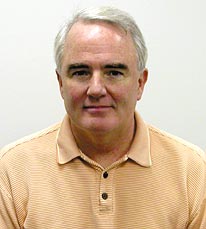2005 Articles
'Customers Should Not Pay for Excess Overhead'
 |
| SMC’s Rob Coates |
Rob Coats in many ways typifies the new breed of business leader. An engineer by training, and with an impeccable business pedigree – he spent the first half of his career in operations management at Procter & Gamble – Coats in 1994 acquired SMC, a small EMS company in Lexington, KY. In 2003, SMC (estimated 2003 sales: $22.4 million) joined the ems-Alliance, a network of mid-sized EMS providers throughout the world. He talks with Circuit Assembly’s Mike Buetow on manufacturing, marketing and why some OEMs are returning to the U.S.
CA: How did you make the jump from consumer products to electronics manufacturing? And what, if any, similarities do you see in the respective markets?
RC: The real jump was from manager to manager with equity. The change came more by timing than choice, with the business metrics being more key than the industry. The huge difference in company size and the big change from direct consumer sales to intermediate commercial goods manufacturing dwarfed any similarities.
CA: How has the OEM-EMS relationship changed, and where does it stand now?
RC: About 90% of SMC’s business at the outset was with a very large office products company whose focus was almost entirely on driving out cost. Over the last 10 years SMC has focused on broadening our customer base in general (more customers) and broadening our industry base specifically (no more than 30% in one industry). In addition, we have focused on acquiring customers that really need our value-added services. In nearly all cases, we now have a strong, personal relationship between an SMC executive manger and a key executive manager of our customer – generally the president or site manager. We have clearly become more integrated into our customer’s business at nearly all levels and functional areas.
CA: How critical is marketing to an EMS firm, and should that strategy change based on the size of the company?
RC: SMC moved from minimal marketing during my first seven years of ownership to a much higher level of focus (and expenditure) in my last three years. We have had significant sales growth with new customers only in the last three years, and unquestionably actively marketing SMC is a key element in that growth. The approach to marketing a Tier I EMS company would have significant changes in strategy due to the way large OEMs may outsource; however, Tier II companies’ marketing programs may be not too dissimilar from ours.
CA: You have recently expanded your U.S. footprint. Is your strategy to grow capacity once demand has been established, or in anticipation of future demand (i.e., “Build it and they will come”)?
RC: Our strategy has consistently been to grow capacities in all areas (building, equipment, technologies, management skills, financially) to support new opportunities. We have successfully grown our capacity in all of these different areas at different times with three to four months’ notice and believe our customers should not pay for unnecessary or excess overhead costs.
CA: SMC is now two years into the ems-Alliance: How has this impacted your business? What would you do differently, if you had the chance?
RC: SMC is clearly viewed differently by prospects as well as by current customers as a result of our active participation in the ems-Alliance. The idea of global reach in both purchasing materials and production options resonates with nearly everyone. We have won business as a direct result of the Alliance (business moved from another member) and indirectly (lower material costs from global purchasing). A lot of the work setting up the Alliance was already in place when we joined, so I would not change anything except to accelerate most of the changes we have made or are currently making. However, the very reason for the Alliance’s success also is the reason change is hard to push. Crossing language and cultural barriers is difficult, hence the value of offering our customers a solution already in place. These same barriers make changes within the Alliance (common software; joint purchasing agreements; common systems for business transitions) slower than I would like, although we are well ahead of most mid-market competitors.
CA: When we look back on 2005, what do you think will characterize the year for electronics makers?
RC: First, a sudden awareness and urgency about lead-free requirements for Europe. Second, some better news in industry growth will drive more opportunities for EMS providers. And third, an interesting combination of OEMs moving offshore (some for the wrong reasons) and other OEMs coming back onshore (because they went offshore for the wrong reasons).




